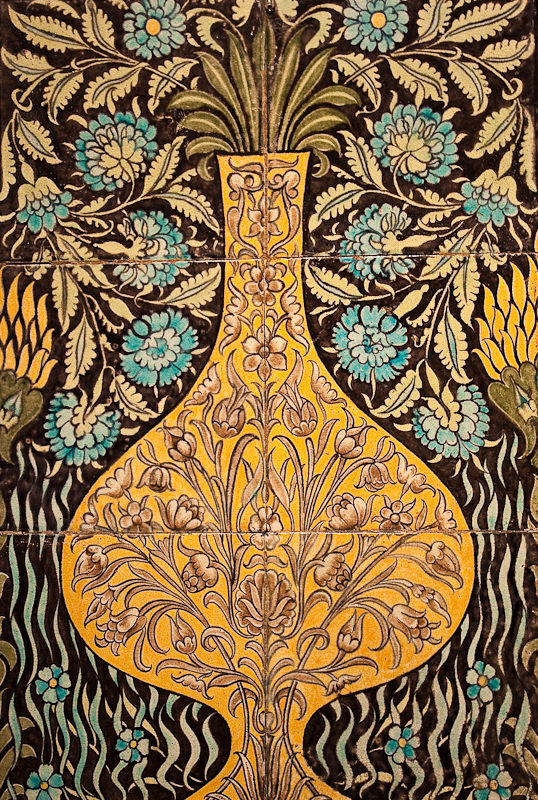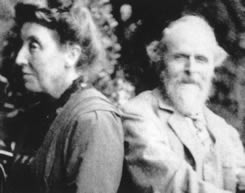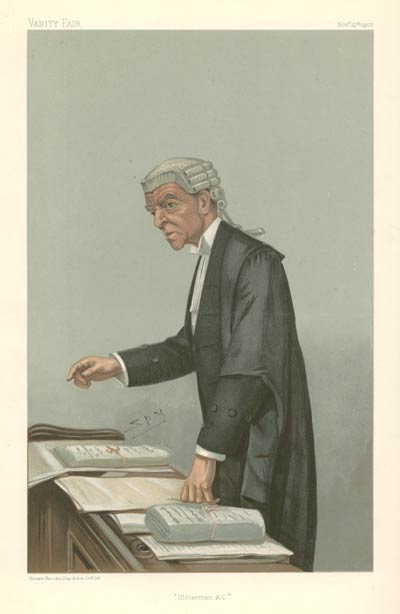|
Spencer-Stanhope Family
Spencer-Stanhope is the family name of British landed gentry who for 200 years held Cannon Hall, a country house in South Yorkshire that since the 1950s has been a museum. The hyphenated form of the name is more common in British orthography, but American sources often omit the hyphen and alphabetize by "Stanhope." 19th century Throughout the 19th and early 20th century, several family members (by birth and marriage) were active in the art world. They were related through John Spencer Stanhope (1787–1873), a classical antiquarian, writer, and explorer, and his wife, Lady Elizabeth, daughter of Thomas Coke of Norfolk, 1st Earl of Leicester. John Spencer Stanhope was the son of industrialist Walter Spencer-Stanhope (1749–1822). The couple died in 1873 within a few days of each other; she on 31 October, he on 7 November. They had six children: * Sir Walter Spencer-Stanhope (1827–1911), Conservative politician. He married Elizabeth Buxton and had 11 children including: : ... [...More Info...] [...Related Items...] OR: [Wikipedia] [Google] [Baidu] |
|
.jpg) |
Cannon Hall (Barnsley)
Cannon Hall is a country house museum located between the villages of Cawthorne and High Hoyland some 5 miles (8 km) west of Barnsley, South Yorkshire, England. Originally the home of the Spencer and later the Spencer-Stanhope family, it now houses collections of fine furniture, paintings, ceramics and glassware. It at one time housed the Regimental Museum of the 13th/18th Royal Hussars (Queen Mary's Own) and the Light Dragoons, which has now closed. Now occupying four rooms in the east wing is the "Family of Artists" exhibition on loan from the De Morgan Foundation, which draws on the links between the Spencer Stanhopes and the De Morgans. The building is constructed of coursed sandstone with ashlar dressings with a symmetrical layout of a central 3-storey block of 5 bays and slightly set back 2-storey side wings of 3 bays. History Although there was a house on the site when the Domesday Survey of 1086 was conducted, Cannon Hall picked up its current name from the ... [...More Info...] [...Related Items...] OR: [Wikipedia] [Google] [Baidu] |
|
Gertrude Spencer-Stanhope
Gertrude Spencer-Stanhope (1857–1944) was an English sculptor and painter. She was the niece of John Roddam Spencer-Stanhope and the cousin of Evelyn Pickering De Morgan, both of whom were noted pre-Raphaelite painters. Life and career Mary Gertrude Elizabeth Spencer-Stanhope was the eldest of 11 children. Her mother was born Elizabeth Julia Buxton, the daughter of Sir John Jacob Buxton. Her father was Sir Walter Spencer Stanhope, who owned Cannon Hall in Barnsley from 1873 to 1911. The Cannon Hall estate had been in possession of the Spencer family, and, later, the Spencer-Stanhopes, since 1660. In 1951, the last surviving member of the family sold the house to the Barnsley Council. It was opened to the public as a museum in 1957. As part of its 50th anniversary celebration in 2007, Cannon Hall Museum featured 19th-century artists from the Spencer-Stanhope family in the exhibition ''Painters of Dreams''. Bronze sculptures by Gertrude Spencer-Stanhope were exhibited, alon ... [...More Info...] [...Related Items...] OR: [Wikipedia] [Google] [Baidu] |
|
.jpg) |
History Of Cawthorne
History (derived ) is the systematic study and the documentation of the human activity. The time period of event before the invention of writing systems is considered prehistory. "History" is an umbrella term comprising past events as well as the memory, discovery, collection, organization, presentation, and interpretation of these events. Historians seek knowledge of the past using historical sources such as written documents, oral accounts, art and material artifacts, and ecological markers. History is not complete and still has debatable mysteries. History is also an academic discipline which uses narrative to describe, examine, question, and analyze past events, and investigate their patterns of cause and effect. Historians often debate which narrative best explains an event, as well as the significance of different causes and effects. Historians also debate the nature of history as an end in itself, as well as its usefulness to give perspective on the problems of the p ... [...More Info...] [...Related Items...] OR: [Wikipedia] [Google] [Baidu] |
 |
Cawthorne
Cawthorne is a village and civil parish in the Metropolitan Borough of Barnsley, South Yorkshire, England. The village was once a centre of the iron and coal mining industry; today it is part of an affluent commuter belt west of Barnsley. At the 2001 census it had a population of 1,108, increasing to 1,151 at the 2011 Census. The village pub, the Spencer Arms, is named after the Spencer-Stanhope family, who once owned large swathes of the local area. Their home was Cannon Hall, the park of which borders the village. Two earlier residences in Cawthorne were Barnby Hall, home of the Barnby family, and Banks Hall, the seat of the Misses Spencer-Stanhope and of a branch of the Greene family. Cawthorne is frequented by ramblers as many walking routes start from the village. The Victoria Jubilee Museum, built to commemorate Queen Victoria Victoria (Alexandrina Victoria; 24 May 1819 – 22 January 1901) was Queen of the United Kingdom of Great Britain and Ireland fro ... [...More Info...] [...Related Items...] OR: [Wikipedia] [Google] [Baidu] |
|
Richard St
Richard is a male given name. It originates, via Old French, from Old Frankish and is a compound of the words descending from Proto-Germanic ''*rīk-'' 'ruler, leader, king' and ''*hardu-'' 'strong, brave, hardy', and it therefore means 'strong in rule'. Nicknames include " Richie", "Dick", " Dickon", " Dickie", "Rich", " Rick", " Rico", " Ricky", and more. Richard is a common English, German and French male name. It's also used in many more languages, particularly Germanic, such as Norwegian, Danish, Swedish, Icelandic, and Dutch, as well as other languages including Irish, Scottish, Welsh and Finnish. Richard is cognate with variants of the name in other European languages, such as the Swedish "Rickard", the Catalan "Ricard" and the Italian "Riccardo", among others (see comprehensive variant list below). People named Richard Multiple people with the same name * Richard Andersen (other) * Richard Anderson (other) * Richard Cartwright (disambiguati ... [...More Info...] [...Related Items...] OR: [Wikipedia] [Google] [Baidu] |
|
 |
De Morgan Centre
] The De Morgan Centre for the Study of 19th Century Art and Society was a gallery in the London Borough of Wandsworth Wandsworth () is a London boroughs, London borough in southwest London; it forms part of Inner London and has an estimated population of 329,677 inhabitants. Its main named areas are Battersea, Balham, Putney, Tooting and Wandsworth, Wandsworth ..., England, which was home for a few years to the De Morgan Collection. From 2002 the De Morgan Centre provided public access to the De Morgan Collection in a dedicated gallery named the De Morgan Centre, which was based in the former West Hill Reference Library in Wandsworth, South West London. The West Hill Library closed on 28 September 2007 and latterly, the De Morgan Foundation shared the building with Wandsworth Museum. Both the De Morgan Centre and Wandsworth Museum closed to the public on 28 June 2014 due to the discontinuation of their lease by the building's freeholder Wandsworth Council. Since the clo ... [...More Info...] [...Related Items...] OR: [Wikipedia] [Google] [Baidu] |
 |
William De Morgan
William Frend De Morgan (16 November 1839 – 15 January 1917) was an English potter, tile designer and novelist. A lifelong friend of William Morris, he designed tiles, stained glass and furniture for Morris & Co. from 1863 to 1872. His tiles often recall medieval or Islamic design patterns. He applied innovative glazes and firing techniques. Galleons and fish were common motifs, as were "fantastical" birds and animals. Many of De Morgan's tiles were designed to create intricate patterns when several were laid together. Life and work Born in Gower Street, London, the son of the distinguished mathematician Augustus De Morgan and his highly educated wife Sophia Elizabeth Frend, De Morgan was supported in his desire to become an artist. At the age of twenty, he entered the Royal Academy schools, but he was swiftly disillusioned with the establishment. Then he met Morris and through him the Pre-Raphaelite circle. Soon De Morgan began experimenting with stained glass, ventured ... [...More Info...] [...Related Items...] OR: [Wikipedia] [Google] [Baidu] |
 |
Evelyn De Morgan
Evelyn De Morgan (30 August 1855 – 2 May 1919), née Pickering, was an English painter associated early in her career with the later phase of the Pre-Raphaelite Movement, and working in a range of styles including Aestheticism and Symbolism. Her paintings are figural, foregrounding the female body through the use of spiritual, mythological, and allegorical themes. They rely on a range of metaphors (such as light and darkness, transformation, and bondage) to express what several scholars have identified as spiritualist and feminist content. De Morgan boycotted the Royal Academy and signed the Declaration in Favour of Women's Suffrage in 1889. Her later works also deal with the themes of war from a pacifist perspective, engaging with conflicts like the Second Boer War and World War I. Early life She was born Mary Evelyn Pickering at 6 Grosvenor Street, to Percival Pickering QC, the Recorder of Pontefract, and Anna Maria Wilhelmina Spencer Stanhope, the sister of the a ... [...More Info...] [...Related Items...] OR: [Wikipedia] [Google] [Baidu] |
 |
Pontefract
Pontefract is a historic market town in the Metropolitan Borough of Wakefield in West Yorkshire, England, east of Wakefield and south of Castleford. Historically part of the West Riding of Yorkshire, it is one of the towns in the City of Wakefield District and had a population of 30,881 at the 2011 Census. Pontefract's motto is , Latin for "After the death of the father, support the son", a reference to the town's Royalist sympathies in the English Civil War. Etymology At the end of the 11th century, the modern township of Pontefract consisted of two distinct and separate localities known as Tanshelf and Kirkby.Eric Houlder, Ancient Roots North: When Pontefract Stood on the Great North Road, (Pontefract: Pontefract Groups Together, 2012) p.7. The 11th-century historian, Orderic Vitalis, recorded that, in 1069, William the Conqueror travelled across Yorkshire to put down an uprising which had sacked York, but that, upon his journey to the city, he discovered that the cro ... [...More Info...] [...Related Items...] OR: [Wikipedia] [Google] [Baidu] |
|
Recorder (legal Office)
A recorder is a judicial officer in England and Wales and some other common law jurisdictions. England and Wales In the courts of England and Wales, the term ''recorder'' has two distinct meanings. The senior circuit judge of a borough or city is often awarded the title of "Honorary Recorder". However, "Recorder" is also used to denote a person who sits as a part-time circuit judge. Historic office In England and Wales, originally a recorder was a certain magistrate or judge having criminal and civil jurisdiction within the corporation of a city or borough. Such incorporated bodies were given the right by the Crown to appoint a recorder. He was a person with legal knowledge appointed by the mayor and aldermen of the corporation to 'record' the proceedings of their courts and the customs of the borough or city. Such recordings were regarded as the highest evidence of fact. Typically, the appointment would be given to a senior and distinguished practitioner at the Bar, and i ... [...More Info...] [...Related Items...] OR: [Wikipedia] [Google] [Baidu] |
|
 |
Queen's Counsel
In the United Kingdom and in some Commonwealth countries, a King's Counsel (post-nominal initials KC) during the reign of a king, or Queen's Counsel (post-nominal initials QC) during the reign of a queen, is a lawyer (usually a barrister or advocate) who is typically a senior trial lawyer. Technically appointed by the monarch of the country to be one of 'His erMajesty's Counsel learned in the law', the position originated in England and Wales. Some Commonwealth countries have either abolished the position, or renamed it so as to remove monarchical connotations, for example, ' Senior counsel' or 'Senior Advocate'. Appointment as King's Counsel is an office, conferred by the Crown, that is recognised by courts. Members have the privilege of sitting within the inner bar of court. As members wear silk gowns of a particular design (see court dress), appointment as King's Counsel is known informally as ''receiving, obtaining,'' or ''taking silk'' and KCs are often colloquially ... [...More Info...] [...Related Items...] OR: [Wikipedia] [Google] [Baidu] |
 |
John Roddam Spencer Stanhope
John Roddam Spencer Stanhope (20 January 1829 – 2 August 1908) was an English artist associated with Edward Burne-Jones and George Frederic Watts and often regarded as a second-wave pre-Raphaelite. His work is also studied within the context of Aestheticism and British Symbolism. As a painter, Stanhope worked in oil, watercolor, fresco, tempera, and mixed media. (Some of his oil paintings are mistaken for tempera.) His subject matter was mythological, allegorical, biblical, and contemporary. Stanhope was born in Yorkshire, England, and died in Florence, Italy. He was the uncle and teacher of the painter Evelyn De Morgan. Life and career Stanhope was the son of John Spencer Stanhope of Horsforth and Cannon Hall, a classical antiquarian who in his youth explored Greece. The artist’s mother was Elizabeth Wilhemina Coke, third and youngest daughter of Thomas William Coke of Norfolk, first Earl of Leicester; she and her sisters had studied art with Thomas Gainsborough. Stanh ... [...More Info...] [...Related Items...] OR: [Wikipedia] [Google] [Baidu] |